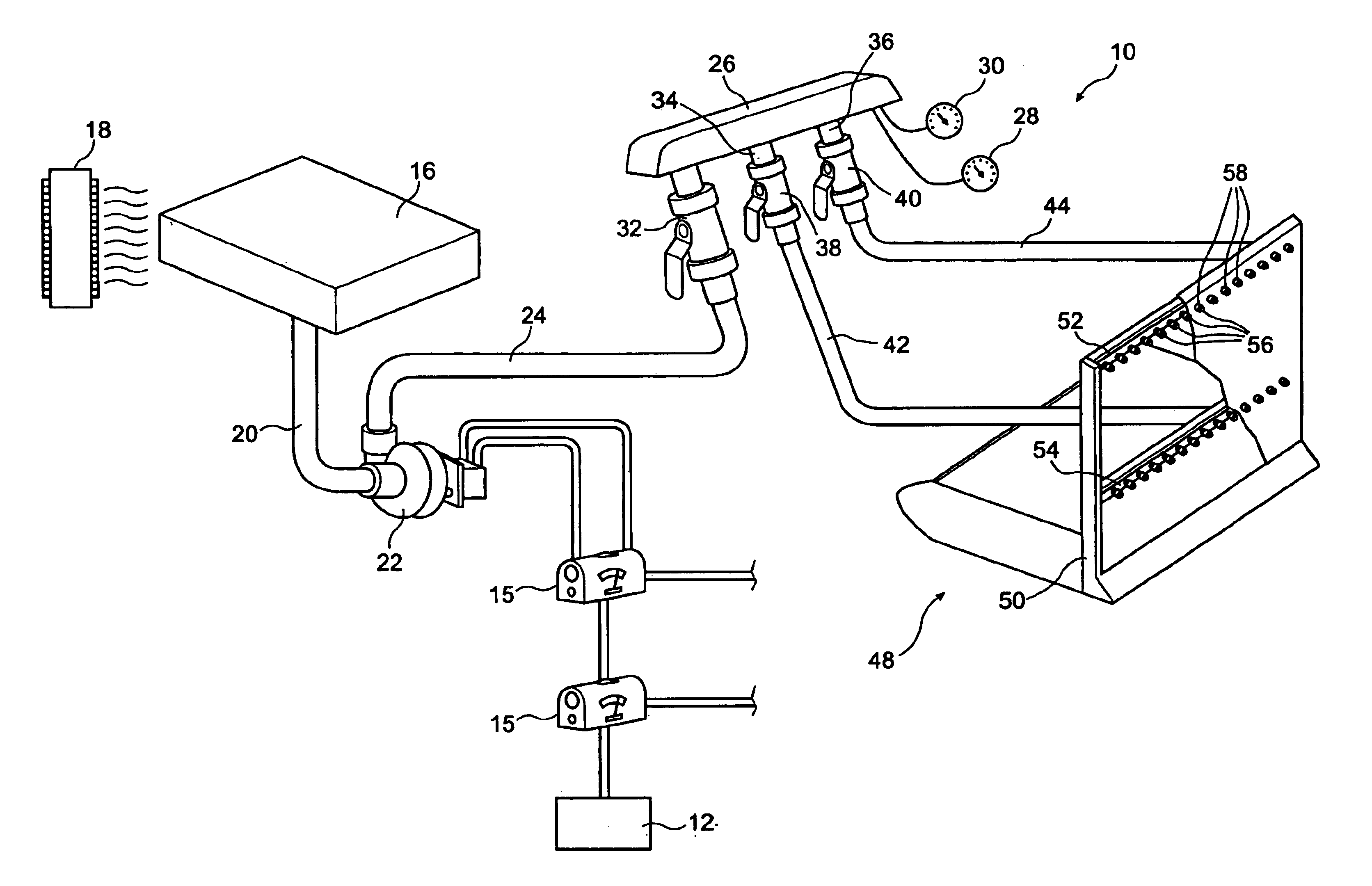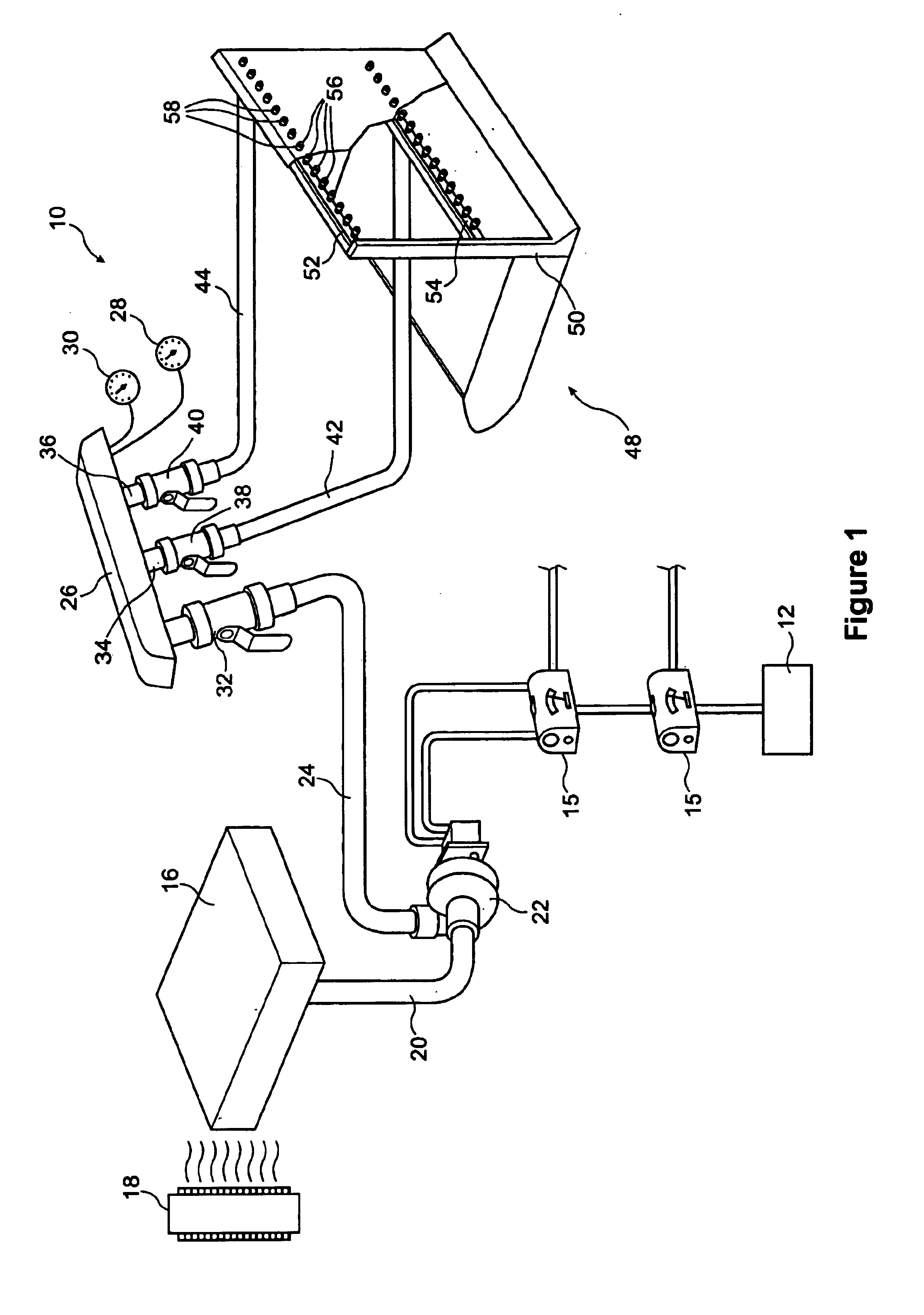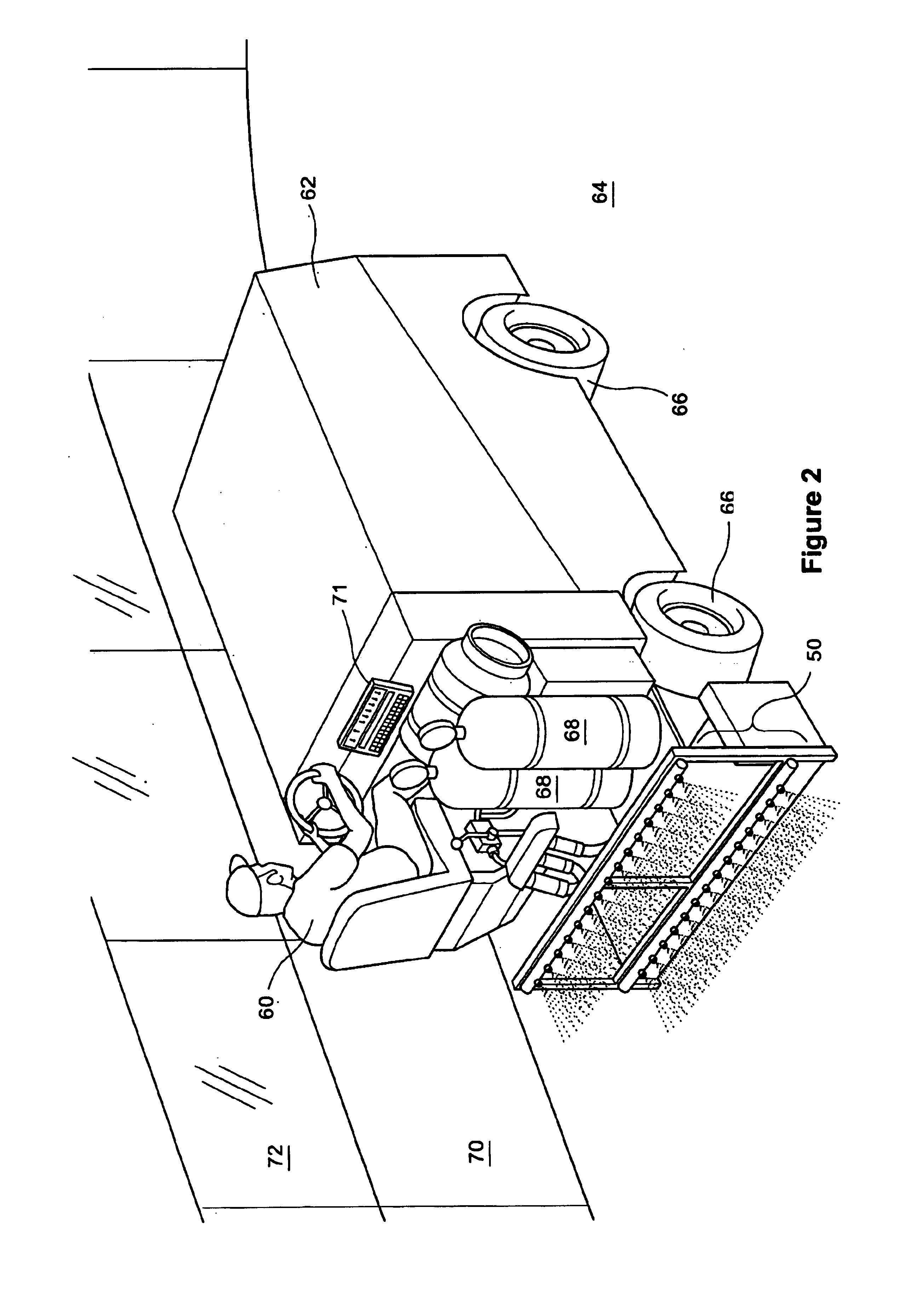Ice maker and a method of making ice
a technology of ice maker and ice maker, which is applied in the field of ice maker and ice making equipment and methods, can solve the problems of more snow accumulation during skating, more labour intensive, unsafe, and expensive, and achieve the effect of reducing the voids contained in the ice, reducing the voids, and effectively degassing
- Summary
- Abstract
- Description
- Claims
- Application Information
AI Technical Summary
Benefits of technology
Problems solved by technology
Method used
Image
Examples
example
[0058]A test slab was made to test the formation of ice according to the present invention. The test slab consisted of a cooled surface of 2.5 square feet in size. The conditions during the test included the following: ambient air temperature 54° F., water temperature 150° F., test slab temperature 17° F., ice thickness ¾″ and water source municipal water.
[0059]In the first test, water was poured onto the test slab at ⅓ liter at a time. The oxygen content was measured at 10.5 parts per million before the water was applied to the slab. Once the ice was formed, it was tested for hardness and a Leeb reading of 202 was obtained. This application method is analogous to a conventional water flood of the prior art.
[0060]In a second test, municipal water was sprayed onto the test slab using a top spray bar (3 T-Jet 4006 Nozzles @ 18″ above slab) and a bottom spray bar (3 T-Jet 8002 Nozzles @ 10″ above slab). Oxygen content before spraying was measured at 10.5 and a Leeb hardness reading of ...
PUM
 Login to View More
Login to View More Abstract
Description
Claims
Application Information
 Login to View More
Login to View More - R&D
- Intellectual Property
- Life Sciences
- Materials
- Tech Scout
- Unparalleled Data Quality
- Higher Quality Content
- 60% Fewer Hallucinations
Browse by: Latest US Patents, China's latest patents, Technical Efficacy Thesaurus, Application Domain, Technology Topic, Popular Technical Reports.
© 2025 PatSnap. All rights reserved.Legal|Privacy policy|Modern Slavery Act Transparency Statement|Sitemap|About US| Contact US: help@patsnap.com



